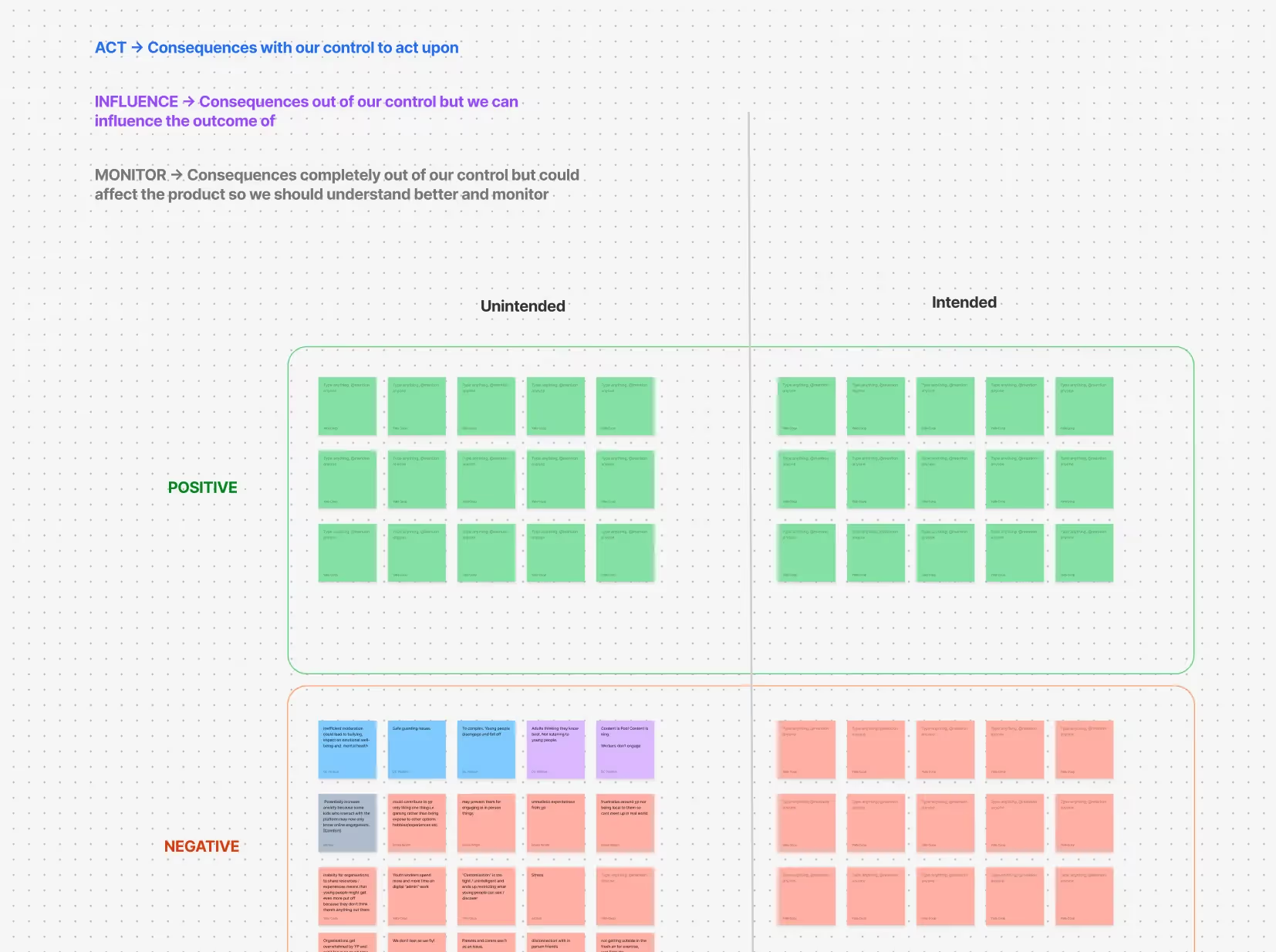What is Consequence Scanning?
Consequence scanning is a structured workshop method that helps teams examine the potential effects of their products or features on people, communities, and the wider world. It's a practical approach to identifying and addressing both positive and negative impacts before they occur.
Originally developed by Doteveryone, this method encourages teams to look beyond immediate user interactions and consider broader societal implications. It's particularly valuable during product development, helping teams make more informed decisions about what they're building.
Why Use Consequence Scanning?
Consequence scanning helps us:
- Prevent reputational damage
- Maximize our positive impact
- Surface hidden concerns early
- Align innovation with our values
- Create responsible, thoughtful solutions
- Address potential harms proactively
Core Questions
Every consequence scanning session addresses three fundamental questions:
- What are the intended and unintended consequences of this product or feature?
- What are the positive consequences we want to focus on?
- What are the consequences we want to mitigate?
Understanding Consequences
Intended Consequences
- These are our planned impacts
- Reframe project requirements in terms of real-world effects
- Focus on actual change rather than features
Unintended Consequences
- Learn from historical precedents
- Identify gaps and oversights
- Consider alternative use cases
- Remember: unintended doesn't always mean negative
How to Run the Workshop
Phase 1: Introduction (30 minutes)
Individual Reflection (10 minutes)Give everyone quiet time to write down what they understand to be the intended consequences. Focus on one consequence per note, considering both immediate and long-term effects on users, communities, and society.
Team Review & Affinity Sorting (20 minutes)Share all intended consequences with the group and cluster similar ideas together. Create clear theme labels for each cluster to help organise thinking and identify patterns.
Phase 2: Ideation (45 minutes)
First Round (15 minutes)Begin with individual quiet time for brainstorming all possible consequences, both positive and negative. Don't filter or judge ideas at this stage - focus on capturing direct, indirect, and unexpected effects.
Review & Build (20 minutes)Share ideas with the group and organise them into themes. Use this review to inspire new ideas and identify gaps in thinking. Take additional quiet time to build on what others have shared.
Final Sort (10 minutes)Organise all ideas into clear groupings, ensuring concepts aren't duplicated and all ideas are clearly expressed.
Phase 3: Action (45 minutes)
Categorisation (15 minutes)Group consequences into three categories:
- Act: Critical impacts requiring immediate action
- Influence: Areas where we can guide outcomes indirectly
- Monitor: Long-term effects to track and research
Impact Assessment and Discussion (30 minutes)Vote on whether each consequence is positive or negative, then discuss as a group to identify priorities and plan next steps. Assign clear responsibilities for follow-up actions.
Keep time boundaries clear and create a safe space for sharing concerns. For remote sessions, use digital tools like Miro or FigJam. Document decisions and plan follow-up sessions to track progress.
If you're interested in learning more about consequence scanning or would like support implementing it in your organisation, we'd be delighted to help. Please don't hesitate to get in touch with us


